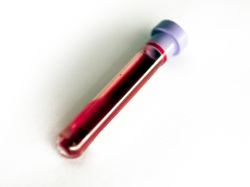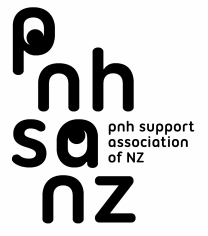Diagnosis

A PNH diagnosis is confirmed by a specialised "flow cytometry" blood test. This specialised test is often requested as a result of earlier blood tests indicating abnormal blood levels, specifically with regard to low haemoglobin, raised lactate dehydrogenase (LDH), raised bilirubin (a breakdown product of hemoglobin), and decreased levels of haptoglobin.
PNH can affect anyone of any age, but is most commonly diagnosed in young adults in their 20s or 30s. Symptoms generally appear very gradually and are non-specific (e.g. fatigue, abdominal/muscular pain, headaches), which can lead to a slow diagnosis of the PNH disease. A classic sign of PNH is discoloration of urine due to the presence of haemoglobin from the breakdown of red blood cells.
Symptoms and severity of the disease vary widely, allowing some patients minimal disruption to their daily lives while others are severely limited in their ability to work, socialise and undertake simple physical activities such as light housework or walking. Refer to the symptoms section for a more complete list of possible impacts of the disease.
PLEASE NOTE: This information has been prepared as a guide for patients. It is not to be substituted for medical advice and accuracy is not guaranteed. Please consult with your medical practitioner for further information regarding your personal circumstances.
This information has been prepared by PNHSAA Inc., is copyright protected and is used with their permission.
PNH can affect anyone of any age, but is most commonly diagnosed in young adults in their 20s or 30s. Symptoms generally appear very gradually and are non-specific (e.g. fatigue, abdominal/muscular pain, headaches), which can lead to a slow diagnosis of the PNH disease. A classic sign of PNH is discoloration of urine due to the presence of haemoglobin from the breakdown of red blood cells.
Symptoms and severity of the disease vary widely, allowing some patients minimal disruption to their daily lives while others are severely limited in their ability to work, socialise and undertake simple physical activities such as light housework or walking. Refer to the symptoms section for a more complete list of possible impacts of the disease.
PLEASE NOTE: This information has been prepared as a guide for patients. It is not to be substituted for medical advice and accuracy is not guaranteed. Please consult with your medical practitioner for further information regarding your personal circumstances.
This information has been prepared by PNHSAA Inc., is copyright protected and is used with their permission.

